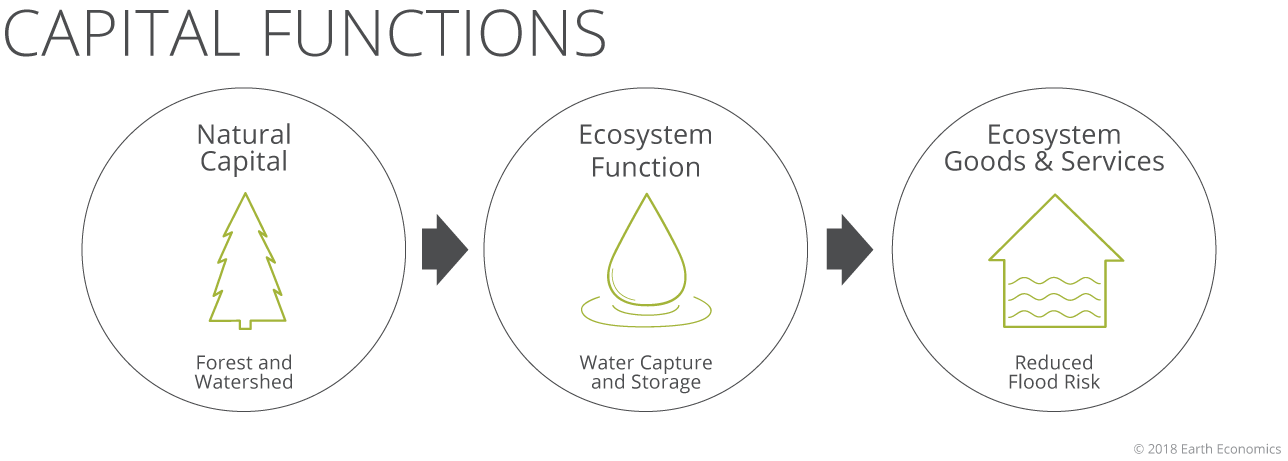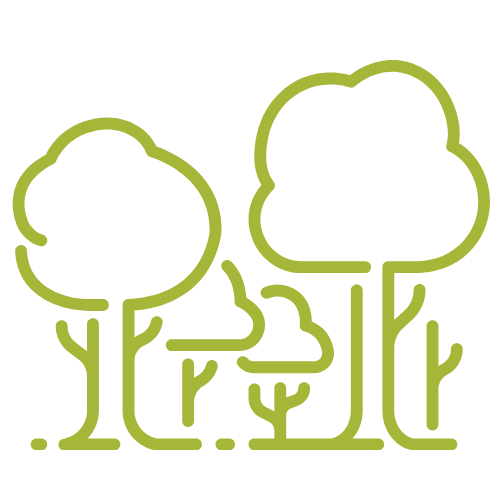
Natural Capital 101
Understanding Natural Capital
The Powerful Economics of Nature
Natural capital isn't just scenery—it's working infrastructure. Natural resources like forests, wetlands, rivers, minerals, and entire ecosystems power our economy by producing ecosystem goods and services we depend on daily. A forest within a watershed? It's a sophisticated water filtration system operating at zero cost.
Any product of an ecosystem function that benefits humans is an ecosystem good or service.
Goods are tangible things like drinking water, timber, fish, crops, and wildlife. Most goods can only be used or owned by one person, and they are generally easy to value and trade in markets.
Services are intangible, but also immensely valuable: flood protection can prevent billions in damage, water filtration can eliminate treatment costs, and recreational spaces can boost health and property values. Because ecosystem services cannot often be traded in markets or privately owned, they are far more difficult to value.
Natural capital refers to naturally occurring resources—plants, animals, air, water, soils—whose interactions produce benefits for people, known as ecosystem services. While these concepts are closely related, they serve different roles in understanding environmental value:
Natural capital is the foundation for all benefits provided by nature. Including natural capital in our assessment of public and private assets clarifies the ways in which economic and environmental health are intertwined. In recent years, governments and the private sector have developed and promoted natural capital accounting approaches including the SEEA EA framework to include natural assets along with built and financial capital.
Natural Capital
Environmental assets (forests, wetlands, soils)
Stored value that appreciates over time
Your environmental "bank account"
Ecosystem Services
Services like clean water, carbon storage, and flood protection
Benefits produced by natural capital
Ongoing flows of value over time
Your environmental "dividends"
The Bottom-Line Perspective
Lost Ecosystems: Growing Costs
When an ecosystem service is lost, it often needs to be replaced by a new tax district and expensive new infrastructure. The replacement? Almost always more expensive, less effective, and requires constant maintenance.
In the long run, preserving natural capital is fiscally responsible and benefits both current budgets and future generations.
Natural Capital: Increasing Returns
Built capital investments provide immediate, near-term benefits. But in the long term, they usually lose value. Buildings crumble. Equipment breaks. Technology becomes obsolete. A new car loses value the moment you drive it off the lot—and your great-grandchildren won't be driving it.
Natural capital plays by different rules. When protected and managed properly, these assets actually appreciate over time—growing, strengthening, and essentially maintaining themselves. A healthy watershed can supply water now and, if kept healthy, may continue to provide water for our great-grandchildren.






